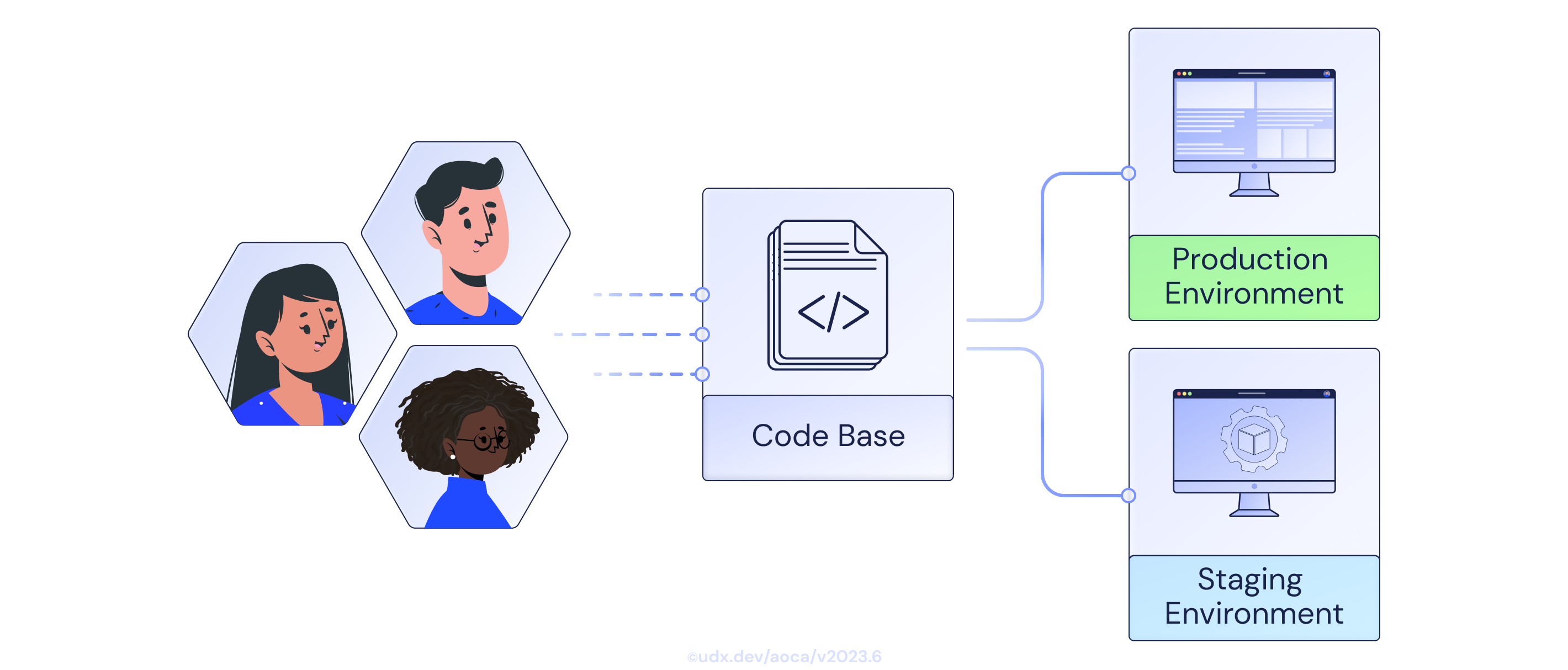But too often, that trust is missing. Environments drift, testing happens too late, and we find ourselves debugging surprises instead of building solutions.
That trust doesn’t just come from clever code. It comes from clear testing practices, reproducible environments, and the ability to build and share progress in a way that makes sense for the whole team.
That’s what software logistics is all about.
And testing isn’t just about catching bugs. It’s how we confirm that what we built actually meets the need — not just according to us, but for our team, our product, and our users.
 On the visual we can see that code change enters a process — validated by automated tests before merging
On the visual we can see that code change enters a process — validated by automated tests before merging
That’s why testing has to be part of the flow from the very beginning. It’s not a checkbox at the end — it’s the feedback loop that guides the whole process.
Testing gives every change a chance to prove itself — and gives teams the insight to adapt before it's too late. It reduces risk, builds confidence, and aligns implementation with expectations early.
In that sense, testing isn't the finish line — it's the runway. It turns ideas into working features by confirming value at every step.
When you can spin up an environment that matches production — not just locally, but in any dev, staging, or test setup — everything changes.

-
You catch issues early.
-
You test changes under real conditions.
-
You make better decisions about what and how to build.
It’s not just about making sure it works “in prod.” It’s about understanding what you're building as you build it. When the environment behaves like the real thing, so can you.
But when teams lack the ability to reproduce real environments, things start to fall apart:
-
Debugging becomes guesswork
-
Features break in staging
-
Releases feel risky
-
Developers spend more time fighting setups than solving problems
That invisible gap — between where we build and where we run — becomes a silent bottleneck that slows everything down.
Imagine everyone on the team working in the same setup, seeing the same results, testing the same scenarios.
No more “works for me.” No more guessing.

When everyone develops and tests in environments that reflect the real world — not just similar setups, but the same setups — everything gets easier. Communication improves, debugging is quicker, and trust builds across the stack.
That shared context speeds everything up:
-
Easier debugging — everyone sees the same logs, behaviors, and edge cases
-
Clearer reviews — reproducing issues or testing a branch becomes frictionless
-
Faster, safer releases — less time spent chasing inconsistencies means more time building
It also strengthens collaboration. Engineers, QA, DevOps, and even PMs speak the same language because they’re all looking at the same thing. That kind of alignment turns teams into tight, fast-moving units.
The faster you can deploy an environment with your latest fix, feature, or experiment, the more you can try — and the more you can learn.
Good software logistics means:
-
Spin it up. Test it. Share it.
-
Tear it down. Try again.
-
Release with confidence.

It’s not just about going faster. It’s about working with fewer blockers. With the right logistics in place, teams can explore ideas without fear, move through approvals without bottlenecks, and release updates regularly — without the stress of wondering what might break.
That’s what logistics unlock: the freedom to build better software, together.
Talk to an Expert
Grow and transform your brand by embracing technology and reimagining the fan experience.